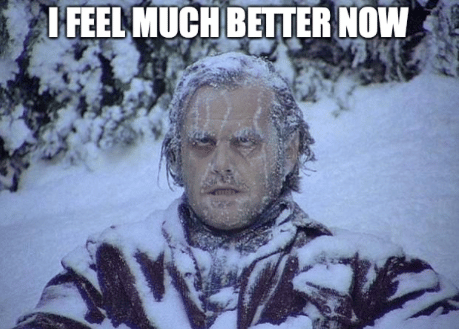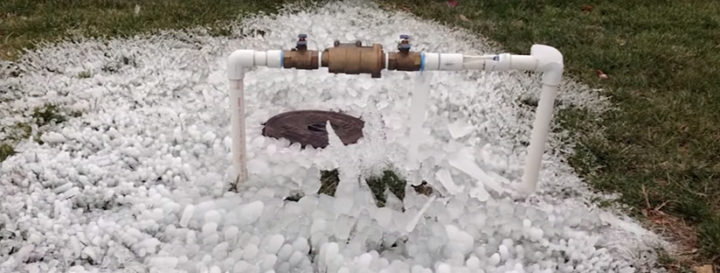Do you need to winterize irrigation systems in Austin? We don’t get too much cold weather here in Central Texas, but when we do, ice and freezing pipes can really cause some damage!
A little preparation can prevent headaches and save you money down the road.

What does sprinkler winterization look like in Austin?
Winterization in Austin looks a little different than in the rest of the country. In our semiarid climate, plants still need a little bit of water — but dramatically less than the rest of the year.
Depending on the unique microclimates in your yard, you may want to reduce watering or turn it off entirely for certain zones.
In the summer, you may water as many as 1-2 inches per week. In the winter, you can probably reduce it to just 1/2 inch per week. Many irrigation controllers can take care of this using a feature called “seasonal adjustment” that automatically calculates a 40-70% reduction.
Don’t hesitate to reach out to our irrigation experts if you have any questions about settings or need help programming your irrigation system controller.
Checking for leaks can save money with Austin Water!
Did you know that Austin Water uses your winter water usage to calculate your wastewater charges for the following year?
Irrigation systems are one of the biggest contributors to your wastewater calculations, especially if they leak every time they run. Now is the time to check for leaks to make sure your utility bills don’t go UP next year!
You can learn more on Austin’s Wastewater Averaging FAQ page or by watching the short video below…
Completely hypothetical case study: It’s December, and the City of Austin is taking a look at wastewater usage. Our friend Bob is a busy guy, and he hasn’t noticed the irrigation leak in the back corner of his yard. Due to the leak, his wastewater usage appears 25% higher than usual. This increases his fixed monthly wastewater rate by $25, which adds up to $300 over the next 12 months! Don’t be like Bob!
What do we do before a big freeze?
Ok, so what should you do if an actual freeze is on the way? You can keep eye on the weather and perform a few simple steps to winterize irrigation systems.
- Turn the system off
- Insulate any exposed hardware
Insulating your hardware is especially important this year after price fluctuations have driven up the cost of brass and copper. Your backflow preventer is one piece of expensive hardware that can be located above ground — and these days, a new one can cost over $1000!
You can purchase and install insulating bags yourself, or give us a call, and we’d be happy to come help you out.

Do we need to drain the whole system?
Even during recent “snowpocalypse” events in Central Texas, the freeze didn’t stick around long enough to penetrate very deeply into the ground. So the short answer is, no, you usually don’t need to drain your whole system for winterization.
If you have any doubts, or questions about any of the above information, don’t hesitate to contact us or give us a call at 512-291-7050. It’s the perfect time for…
- Leak checks and repairs
- Controller programming and seasonal adjustment
- Rain gauge installations
- Pressure-regulating components
- Efficiency upgrades
- And more!
You can learn more on our irrigation services page.


